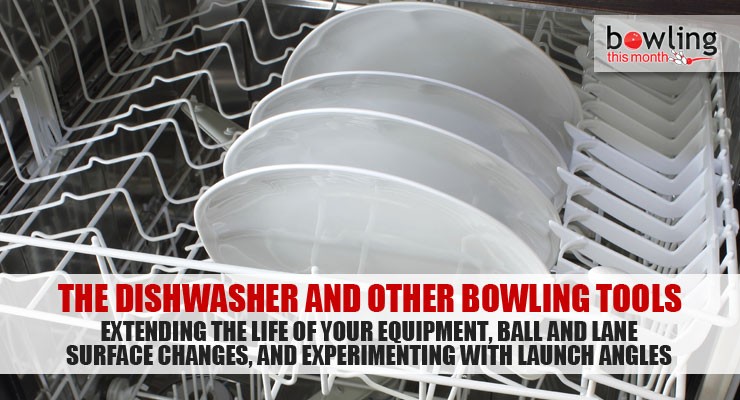Article Contents
- 1. Home remedies
- 2. Constant surface changes
- 3. Manipulating the ball surface
- 4. Launch angles
Note: This article is only available to Bowling This Month subscribers.
Now that I’ve collected quite a number of questions from readers, I thought this would be a good time to address them. We’ll start with how to maintain your equipment in a way that will keep it working at peak performance, then we’ll examine changes that take place in both your ball and the lane surface, and finish with a few launch angles to try out.
Home remedies
There is always going to be some form of risk when using home remedies such as the one I am going to suggest. I can tell you I have never had a bowling ball crack while using it. However, there is always that possibility since there are so many different varieties of home appliances.
One of the best methods of getting oil out of the ball is using a dishwasher. There are several things you can do as a precaution so that you get the most out of this method while still protecting your equipment.
- Make sure to NOT use the heat/dryer cycle of the dishwasher.
- Cover ALL of the holes in the bowling ball. One thing you can use to cover the holes is duct tape; another is modeling clay.
- If you are using any form of an interchangeable thumb, REMOVE the thumb sleeve.
- Place the ball on the bottom rack of the dishwasher.
- Use a liquid dishwashing detergent that has bleach included.
- Run the dishwashing cycle only ONE time. If you want to run the cycle a second time, be sure to allow the ball to cool off completely before running it again.
- If water should happen to leak into the holes, take a hair dryer/blow dryer and dry any moisture out of the holes.
Constant surface changes
The next thing I would like to discuss is the change in both the lane surface and the surface of the ball. Notice the scratches in the lane inside the black square and the scratches in the ball inside the white rectangle.
The scratches that are prevalent and noticeable on the ball were created by the its surface coming in contact with the surface of a wood lane. The same ...
Already a premium member? Click here to log in.


